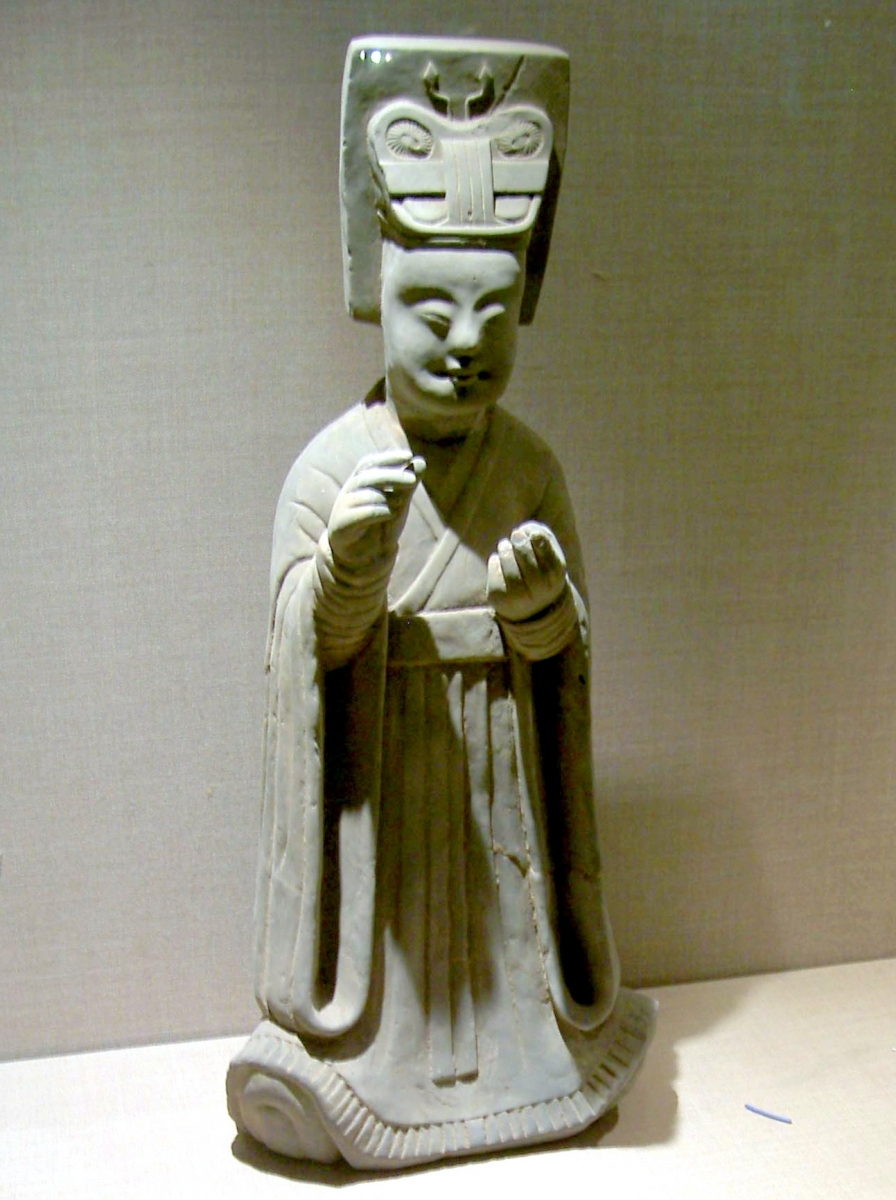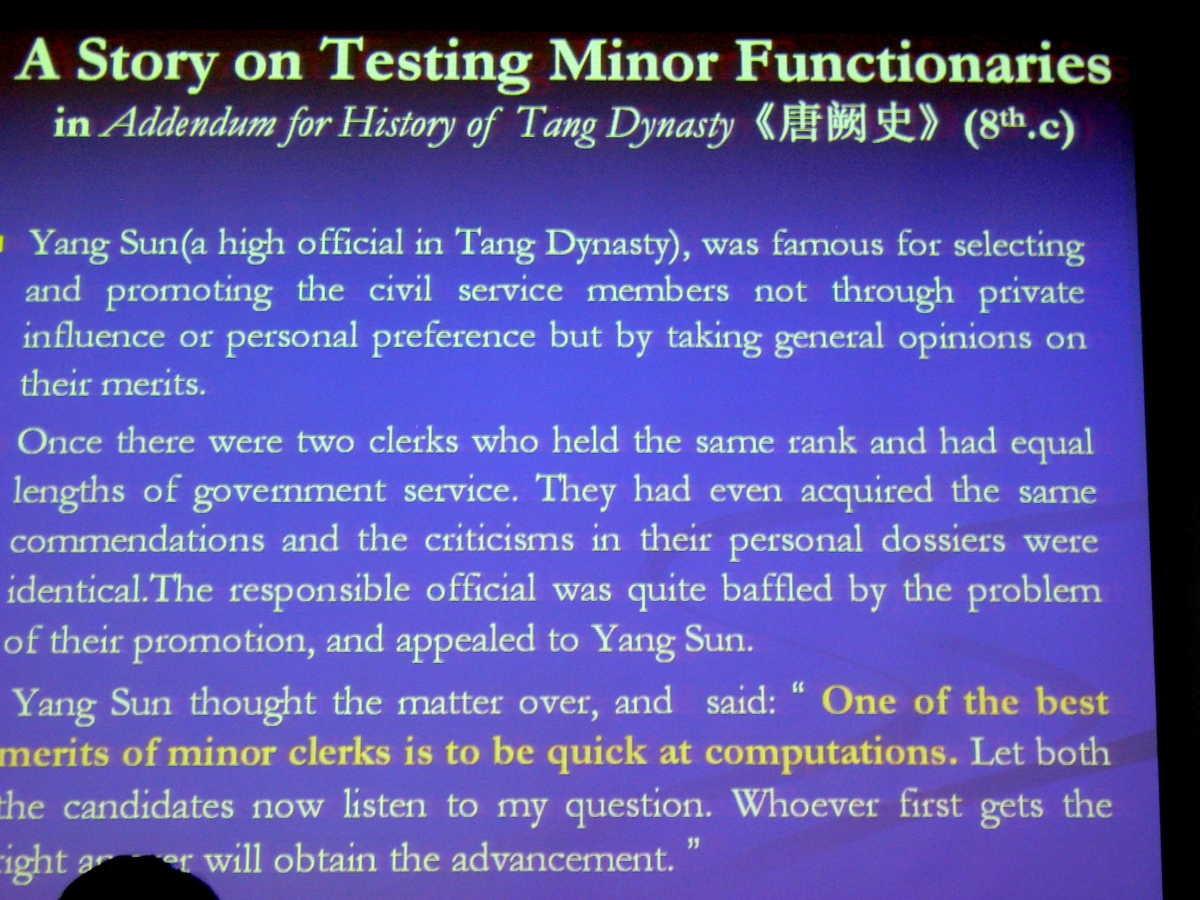- About MAA
- Membership
- MAA Publications
- Periodicals
- Blogs
- MAA Book Series
- MAA Press (an imprint of the AMS)
- MAA Notes
- MAA Reviews
- Mathematical Communication
- Information for Libraries
- Author Resources
- Advertise with MAA
- Meetings
- Competitions
- Programs
- Communities
- MAA Sections
- SIGMAA
- MAA Connect
- Students
- MAA Awards
- Awards Booklets
- Writing Awards
- Teaching Awards
- Service Awards
- Research Awards
- Lecture Awards
- Putnam Competition Individual and Team Winners
- D. E. Shaw Group AMC 8 Awards & Certificates
- Maryam Mirzakhani AMC 10 A Awards & Certificates
- Two Sigma AMC 10 B Awards & Certificates
- Jane Street AMC 12 A Awards & Certificates
- Akamai AMC 12 B Awards & Certificates
- High School Teachers
- News
You are here
Illustrating The Nine Chapters on the Mathematical Art - In the Classroom: Civil Servants
I conclude the presentation on the Nine Chapters on the Mathematical Art to my History of Mathematics class by exhibiting some photos that demonstrate the importance of mathematics to civil servants, and the importance of civil servants themselves, in Chinese culture. The slides in Figures 18-19, from Ji Zhigang's lecture, "The Rule of False Double Position: From Suàn Shù Shū to Liber Abaci," mentioned earlier, tell the story of using a mathematics problem to decide which civil servant to promote during the Tang Dynasty (618-907 CE).
Figure 18. This slide from Ji Zhigang's lecture describes Yang Sun's strategy of using a mathematics problem to decide which of two civil servant to promote (photo by the author).
Figure 19. This slide from Ji Zhigang's lecture offers the mathematics problem to be solved by the two candidates for promotion within the civil service of the Tang Dynasty (618-907 CE). The candidates should have recognized it as a problem of "excess and deficit" and solved it quickly. (Answer: 13 robbers, 83 rolls) (Photo by the author)
Figures 20-22 depict pottery statues of civil servants from the National Museum of China in Beijing, showing the respect with which the civil servants were regarded through a number of periods of Chinese history.

Figure 20. This pottery statue of a civil servant from the Sui Dynasty (581-618) is in the National Museum of China in Beijing (photo by the author).

Figure 21. This pottery statue of a civil servant from the Tang Dynasty (618-907) is in the National Museum of China in Beijing (photo by the author).

Figure 22. This pottery statue of a civil servant from the Five Dynasties and Ten States (909-945) is in the National Museum of China in Beijing (photo by the author).
Joel K. Haack (University of Northern Iowa), "Illustrating The Nine Chapters on the Mathematical Art - In the Classroom: Civil Servants," Convergence (April 2017)






